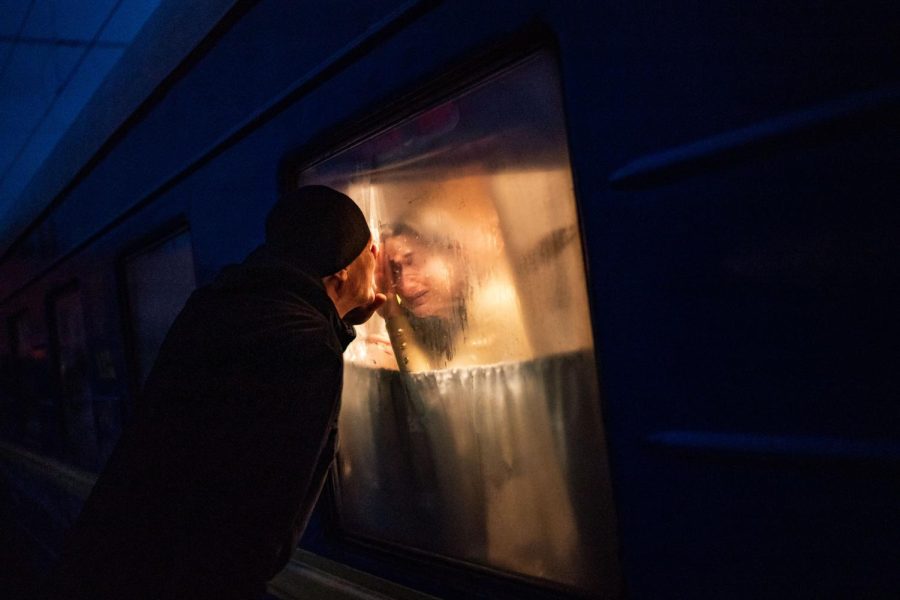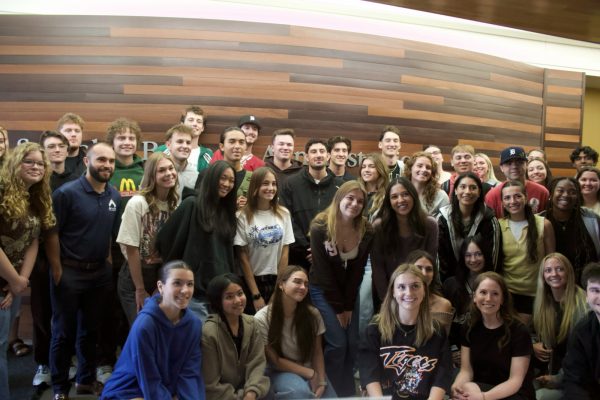OU alumnus and Washington Post photojournalist details coverage in Ukraine
Photo courtesy of The Washington Post
After graduating from Oakland University, Pulitzer Prize winning photojournalist Salwan Georges has been busy reporting on numerous topical and internationally significant events. Most recently, Georges was on assignment in Ukraine – providing the world with the truth behind the ongoing conflict in Eastern Europe.
“It’s a very ugly war, I would say,” Georges said. “The death and destruction and, of course, the bodies. It’s one of the most documented and accessible wars, to be honest, because it’s a war not being fought on the battlefield — it’s fought in neighborhoods, cities and farm lands, all across the country.”
Georges began his coverage in Ukraine after being rerouted from an assignment in Afghanistan. He arrived on February 14 — 10 days before the invasion by the Russian army.
“The day before the war, I was in Kharkiv and people were at coffee shops — [it was] a normal day in any European country, just people going about their business,” Georges said. “I actually photographed a couple getting their wedding picture taken downtown — it was like a totally normal life. Then the next day, bombs started dropping all across Ukraine.”
Georges says that the brutality from the Russian army and impact of the war on civilians is abominable.
“It’s really violent — there are [bombs dropping] in neighborhoods and [on] residential buildings,” Georges said. “I went to so many areas where [there was] a totally residential building — only children lived there with their families, women and elderly people, and [the Russians] are dropping all these bombs. It makes no sense.”
Of the many images Georges captured of this conflict, there is one photograph that stands out to him as the most poignant: at a train station in Odesa, Georges watched as desperate refugees made the devastating choice of leaving the country and their loved ones behind.
Georges relayed the story of this photograph to CNN.
“I approached the man — who I later came to know as Georgiy Keburia — with my camera down,” Georges said. “He acknowledged me with a subtle nod, giving his approval for me to document him saying goodbye to his wife, Maya, and their children. I kept my distance as the scene unfolded. It was one of the most emotional situations I had to witness in my life — and it took me a while to process what I had seen.”
The moment evoked an emotional response from Georges due to his own experiences and background. Georges and his family immigrated to the United States from Syria, after having fled Iraq in the 90’s.
“It’s reliving something I really lived in the past,” Georges said. “Watching the bombs fall and also a lot of goodbyes and funerals — that was all part of growing up. I could really relate to the war there.”
Despite the dangerous nature of the assignment, Georges was willing to accept the element of personal risk because he was so focused on capturing and depicting the emotional toll on those impacted by this conflict.
“You’ve just got to be really smart and try to be as vigilant as possible, but it’s dangerous,” Georges said. “It’s a war — you’ve got to wear the protection gear and also make smart choices, make calls and [do] research. We’re very thankful we had local journalists helping us.”
Reflecting on his time in Ukraine, Georges recognizes the importance of depicting the totality of the events and the effect it has on the victims of this war.
“As a journalist, we have to expose what’s really happening in that country even with the difficulty, even with the dangers [and] even with threats we face,” Georges said. “It’s not all about people who don’t want to listen, because even if they don’t listen, other people in other countries will want to see what’s happening. When you cover something like this, it’s for the whole world to see.”









